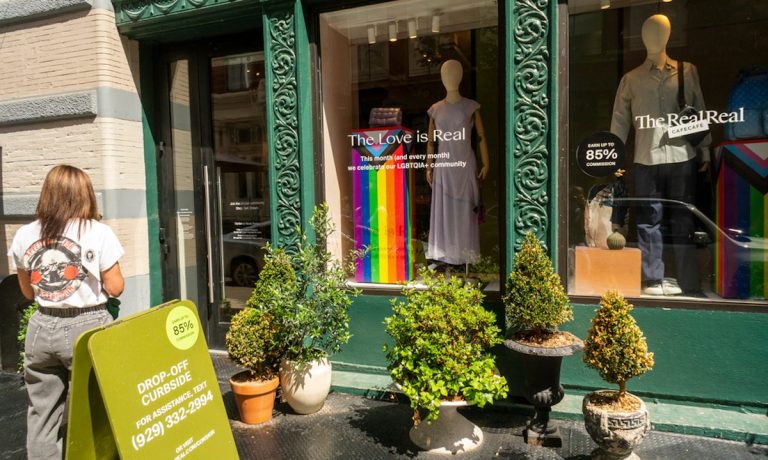Luxury Resale Is Booming, But Some Luxury Brands Fear Cannibalization

Any college-level Business 101 course makes at least a cursory mention of cannibalization, in which companies can inflict unintentional harm as new products edge out existing ones without a net gain, or by selling in cross-channel ways that redirect sales rather than increasing them.
Luxury fashion is dealing with this issue more now, as resale marketplaces continue to jet ahead on pandemic supply chain headwinds and luxury-loving consumers seek labels they crave at prices well below original retail. Consumers love it, but some brands see trouble ahead for products that derive their cachet from exclusivity and nosebleed prices.
Recent news shows the resale trend is very much at work. On Thursday (Dec. 9), luxury fashion platform FARFETCH announced that it’s acquiring the resale platform LUXCLUSIF at an undisclosed sum.
Per a statement, “This will allow FARFETCH to significantly accelerate its resale capabilities through the development of key technology and service features such as automated pricing, and faster geographic and category expansion of its resale service, FARFETCH Second Life.”
This comes after similar recent moves by other influential resale outfits such as NET-A-PORTER, which announced in October that it is teaming up with resale technology provider Reflaunt.
According to an announcement, “Reflaunt’s technology powers the entire customer journey to ensure that contributing to the circular fashion economy is as easy as possible, offering complimentary services such as collecting products from the customers’ home, digital product authentication, pricing recommendation and professional photography management. The curated listings are then uploaded on international marketplaces, and orders [are] fulfilled by Reflaunt partners.”
NET-A-PORTER has made a commitment to “unlock reCommerce” as part of its Infinity sustainability initiative, expected to be fully realized by 2030.
Meanwhile, some luxury brands are taking a cautious approach to formalizing reCommerce.
Quoting figures from resale marketplace ThredUP estimating that “the secondhand market is forecast to double in the next five years to reach $77 billion by 2025,” fashion industry trade journal Women’s Wear Daily (WWD) recently reported that “resale is expected to grow 11 times faster than the broader retail clothing sector to reach $47 billion.”
See also: Luxury Brand NET-A-PORTER Steps Into Resale Market
Luxury Labels Look on as Resale Keeps Rising
WWD noted that “many luxury brands are reluctant to take ownership of the process, fearing that resale could cannibalize sales of their full-price products and dent their image of exclusivity. Others are put off by the complexity of implementing circular models, and doubt the financial viability of such efforts.”
The same article quoted Antoine Arnault, head of image and environment at LVMH, as saying, “We have such long-lasting products and we repair them, we for the moment will stick to that and proposing as [many] beautiful new products, as creative and thrilling new collections as we can. For the moment, we will stay away from that secondhand market.”
Chanel’s President of Fashion Bruno Pavlovsky told WWD, “We want to retain control of our distribution, and I think that approach was an early contributor to the success of the brand. We’ve spent the last 20 years securing that control, so we’re not going to give it up now with partnerships in the secondhand marke. You can’t personify luxury and want to control everything. It’s important for our customers to be able to resell items, but we have decided not to be part of that process.”
Despite the reluctance of prime luxury brands to fully embrace resale/reCommerce, the trend shows no signs of slowing, and in fact has gained momentum partly thanks to the pandemic. As PYMNTS reported in November, “Julie Wainwright, CEO of The RealReal, told analysts on a conference call that her company’s product supply has actually exceeded pre-COVID levels.”
Affording insight as to how resale sees its own position today, Wainwright also told investors that “we believe we are well-positioned from a supply perspective as we enter the holiday season. Our markets are back. We have regional strength and national strength, and I wouldn’t say it’s stability. I would say … we’re exceeding pre-COVID growth levels in our market.”
See also: Luxury Brands Rush to Own the Resale Experience